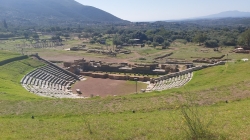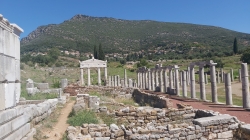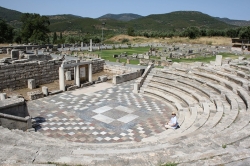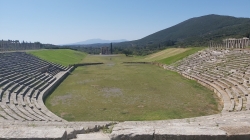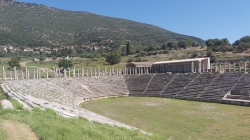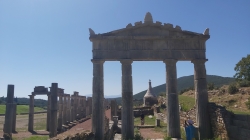Le nostre destinazioni più richieste
I nostri tour:
Common description
Ancient Messini is one of the most exciting and complete archaeological sites ever discovered located in a truly unique and wonderful location.
Just 40 years ago it was considered just a verdant valley in the southwest area of the Peloponnese, while now it is considered one of the most significant archaeological sites of Greek antiquity.
The city flourished in the 4th century BC. after the defeat of the Spartans by the Theban general Epaminondas, thus ending centuries of Spartan rule. Subsequently, it was never destroyed or re-inhabited, only forgotten, thus providing us with an astonishing glimpse into life in ancient times.
The complex, where the discoveries still continue, is believed to have been excavated for only slightly more than a third and has already brought to light the remains of a 10,000-seat theatre, an 18-seat stadium surrounded by Doric porticoes, the athletes' gymnasium, the Odeon, a Roman villa, a huge Agora, as well as an assortment of shrines, temples, statues, fountains and dwellings.
In the archaeological museum, a two-storey building, more than 12,000 finds from excavations are kept.
The city, designed with a symmetrical grid system, can be considered a forerunner of modern urban planning and
its fortifications have helped to preserve the jewel that we can all admire today.
Just 40 years ago it was considered just a verdant valley in the southwest area of the Peloponnese, while now it is considered one of the most significant archaeological sites of Greek antiquity.
The city flourished in the 4th century BC. after the defeat of the Spartans by the Theban general Epaminondas, thus ending centuries of Spartan rule. Subsequently, it was never destroyed or re-inhabited, only forgotten, thus providing us with an astonishing glimpse into life in ancient times.
The complex, where the discoveries still continue, is believed to have been excavated for only slightly more than a third and has already brought to light the remains of a 10,000-seat theatre, an 18-seat stadium surrounded by Doric porticoes, the athletes' gymnasium, the Odeon, a Roman villa, a huge Agora, as well as an assortment of shrines, temples, statues, fountains and dwellings.
In the archaeological museum, a two-storey building, more than 12,000 finds from excavations are kept.
The city, designed with a symmetrical grid system, can be considered a forerunner of modern urban planning and
its fortifications have helped to preserve the jewel that we can all admire today.

